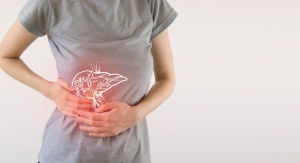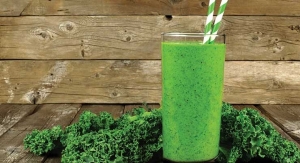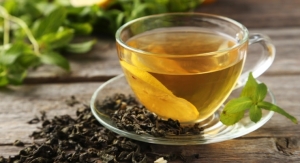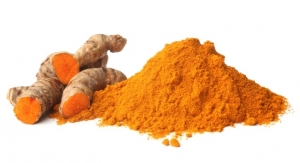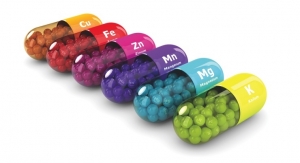06.07.17
Chronic liver diseases rank as the 12th cause of death worldwide and many of these disorders are associated with unhealthy lifestyles. Conversely, a healthier lifestyle can help prevent or reverse liver disease. Liver-related mortality is closely related to the development of cirrhosis, the final consequence of progressive fibrosis, i.e. scarring of the liver resulting from chronic inflammation. According to a new study published in the Journal of Hepatology, researchers found that drinking coffee and herbal tea may protect against liver fibrosis, estimated as the degree of liver stiffness, which is high in extensive scarring of the liver.
"Over the past decades, we gradually deviated towards more unhealthy habits, including a sedentary lifestyle, decreased physical activity, and consumption of a 'Happy Diet'," explains lead author Louise J. M. Alferink, MD, of the Department of Gastroenterology and Hepatology, Erasmus MC University Medical Centre, Rotterdam, The Netherlands, "This Happy Diet, also known as the Western diet, is typically rich in unhealthy foods including processed foods lacking nutrients and artificial sugars. This has led not only to an obesity epidemic, but also to a rapid increase in the prevalence of non-alcoholic fatty liver disease (NAFLD), which is due to extensive accumulation of fat in the liver and resembles alcoholic liver disease in people who do not exceed two drinks a day of alcohol. In this context, examining accessible and inexpensive lifestyle strategies that have potential health benefits, such as coffee and tea consumption, is a viable approach to finding ways to halt the rapid increase of liver disease in developed countries."
Sarwa Darwish Murad, MD, PhD, principal investigator of the study and hepatologist at the Erasmus MC University Medical Center, continued, "There is quite some epidemiological, but also experimental data suggesting that coffee has health benefits on liver enzyme elevations, viral hepatitis, NAFLD, cirrhosis, and liver cancer. Beyond the liver, coffee has been demonstrated to be inversely associated with overall mortality in the general population. The exact mechanism is unknown but it is thought that coffee exerts antioxidant effects. We were curious to find out whether coffee consumption would have a similar effect on liver stiffness measurements in individuals without chronic liver disease."
Data was gathered on 2,424 participants of the Rotterdam study, a large population-based cohort study including participants 45 years or older living in a suburb of Rotterdam, The Netherlands. All participants underwent an extensive physical work-up, including data collection for anthropometrics, blood sampling, hepatological imaging using abdominal ultrasound and Fibroscan, which quantitatively measures liver stiffness. In addition, they completed an externally validated 389-item Food Frequency Questionnaire, which included detailed information on coffee and tea consumption.
Coffee and overall tea consumption was divided into three categories: none, moderate (0-3 cups per day), and frequent (more than 3). Tea consumption was categorized by herbal, green, or black tea and further into none (0) or any (more than 0) consumption.
Investigators found that frequent coffee consumption was significantly associated with lower odds of high liver stiffness values (⩾8 kPa as proxy for liver fibrosis), i.e. less scarring of the liver, independent of lifestyle, metabolic, and environmental traits. When they looked at the whole range of liver stiffness values, they found that both frequent coffee and any herbal tea consumption, even in small amounts, were significantly associated with lower liver stiffness values. Finally, while no direct association was found between either coffee or tea and the presence of fat accumulation in the liver (NAFLD) per se, the effect of coffee on lowering the liver stiffness was significant in both the group with and without liver fat. The authors therefore concluded that frequent coffee and herbal tea seem to have beneficial effects on preventing liver scarring even before overt liver disease has developed.
However, some caution in the interpretation of the results is necessary, as underlined in an accompanying editorial by Salvatore Petta, MD, PhD, of the Section of Gastroenterology and Hepatology, Di.Bi.M.I.S., University of Palermo, Italy, and Giulio Marchesini, MD, of the Department of Medical and Surgical Sciences (DIMEC), ''Alma Mater" University, Bologna, Italy. In fact, the study included only an elderly Caucasian population and there were few participants in the no-coffee or no-tea control groups, which limit a straightforward conclusion about the effect of coffee and tea on the liver. The amount of tea consumed was generally low, making estimation of any protective effect difficult. Further, they note that more than 100 components are present in coffee and tea, including polyphenols and caffeine, which are contained in both beverages in very different and variable amounts.
Hence, when asked "Should we add regular coffee and tea breaks to our daily life? Dr. Petta's and Dr. Marchesini's conclusion is, "Before this policy can be recommended, prospective studies are needed to identify the optimum amounts and the type(s) of coffee and tea leading to more favorable liver outcomes."
"Over the past decades, we gradually deviated towards more unhealthy habits, including a sedentary lifestyle, decreased physical activity, and consumption of a 'Happy Diet'," explains lead author Louise J. M. Alferink, MD, of the Department of Gastroenterology and Hepatology, Erasmus MC University Medical Centre, Rotterdam, The Netherlands, "This Happy Diet, also known as the Western diet, is typically rich in unhealthy foods including processed foods lacking nutrients and artificial sugars. This has led not only to an obesity epidemic, but also to a rapid increase in the prevalence of non-alcoholic fatty liver disease (NAFLD), which is due to extensive accumulation of fat in the liver and resembles alcoholic liver disease in people who do not exceed two drinks a day of alcohol. In this context, examining accessible and inexpensive lifestyle strategies that have potential health benefits, such as coffee and tea consumption, is a viable approach to finding ways to halt the rapid increase of liver disease in developed countries."
Sarwa Darwish Murad, MD, PhD, principal investigator of the study and hepatologist at the Erasmus MC University Medical Center, continued, "There is quite some epidemiological, but also experimental data suggesting that coffee has health benefits on liver enzyme elevations, viral hepatitis, NAFLD, cirrhosis, and liver cancer. Beyond the liver, coffee has been demonstrated to be inversely associated with overall mortality in the general population. The exact mechanism is unknown but it is thought that coffee exerts antioxidant effects. We were curious to find out whether coffee consumption would have a similar effect on liver stiffness measurements in individuals without chronic liver disease."
Data was gathered on 2,424 participants of the Rotterdam study, a large population-based cohort study including participants 45 years or older living in a suburb of Rotterdam, The Netherlands. All participants underwent an extensive physical work-up, including data collection for anthropometrics, blood sampling, hepatological imaging using abdominal ultrasound and Fibroscan, which quantitatively measures liver stiffness. In addition, they completed an externally validated 389-item Food Frequency Questionnaire, which included detailed information on coffee and tea consumption.
Coffee and overall tea consumption was divided into three categories: none, moderate (0-3 cups per day), and frequent (more than 3). Tea consumption was categorized by herbal, green, or black tea and further into none (0) or any (more than 0) consumption.
Investigators found that frequent coffee consumption was significantly associated with lower odds of high liver stiffness values (⩾8 kPa as proxy for liver fibrosis), i.e. less scarring of the liver, independent of lifestyle, metabolic, and environmental traits. When they looked at the whole range of liver stiffness values, they found that both frequent coffee and any herbal tea consumption, even in small amounts, were significantly associated with lower liver stiffness values. Finally, while no direct association was found between either coffee or tea and the presence of fat accumulation in the liver (NAFLD) per se, the effect of coffee on lowering the liver stiffness was significant in both the group with and without liver fat. The authors therefore concluded that frequent coffee and herbal tea seem to have beneficial effects on preventing liver scarring even before overt liver disease has developed.
However, some caution in the interpretation of the results is necessary, as underlined in an accompanying editorial by Salvatore Petta, MD, PhD, of the Section of Gastroenterology and Hepatology, Di.Bi.M.I.S., University of Palermo, Italy, and Giulio Marchesini, MD, of the Department of Medical and Surgical Sciences (DIMEC), ''Alma Mater" University, Bologna, Italy. In fact, the study included only an elderly Caucasian population and there were few participants in the no-coffee or no-tea control groups, which limit a straightforward conclusion about the effect of coffee and tea on the liver. The amount of tea consumed was generally low, making estimation of any protective effect difficult. Further, they note that more than 100 components are present in coffee and tea, including polyphenols and caffeine, which are contained in both beverages in very different and variable amounts.
Hence, when asked "Should we add regular coffee and tea breaks to our daily life? Dr. Petta's and Dr. Marchesini's conclusion is, "Before this policy can be recommended, prospective studies are needed to identify the optimum amounts and the type(s) of coffee and tea leading to more favorable liver outcomes."


